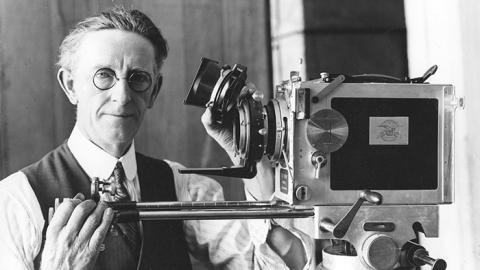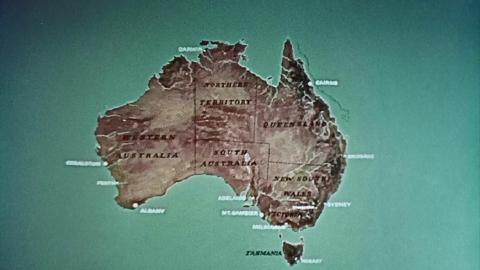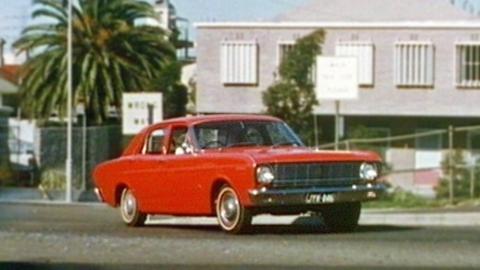

100 years of Film Australia
A chronology of Film Australia – preserving and providing access to the nation’s documentary record for 100 years.
May 1913
Australia’s federal government employed cameraman Bert Ive, who would become its first long-term cinematographer and stills photographer. Initially by himself, and later with other cameramen, Ive established what, from the early 1920s, would become the Cinema and Photographic Branch and filmed a record of Australian life, landscapes and industries until his death in 1939. Much of Ive’s output was of a promotional nature and was screened overseas, especially in the United Kingdom. The Cinema Branch was attached to several government departments until 1939.
1929
The Cinema Branch produced Telling the World, a short documentary on the activities of the Branch itself.
1930
The Cinema Branch produced its first sound film, This is Australia.
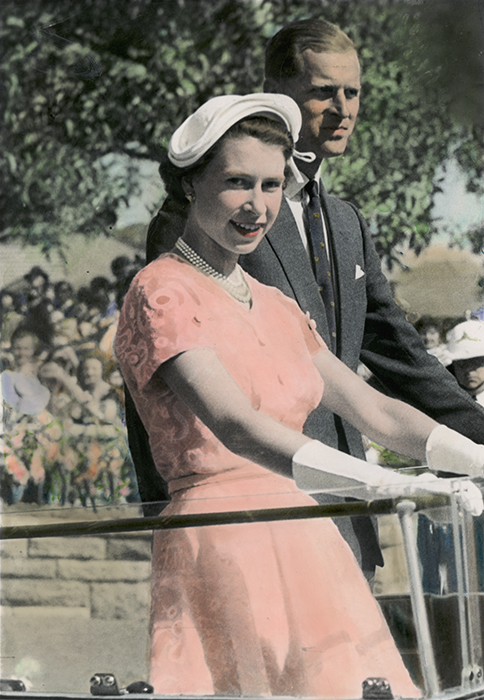
September 1939
The Cinema Branch was absorbed into the government’s newly formed Department of Information (DOI), which established a Film Division in August 1940 to mobilise the film medium for national ends. The DOI employed war cameramen including Damien Parer and Frank Hurley, and by 1945 had commissioned independent producers to make 94 war-related short films for propaganda, information and fund-raising purposes. Titles included 100,000 Cobbers (Ken G Hall, 1942), Soldiers Without Uniform (Charles Chauvel, 1942) and Jungle Patrol (Tom Gurr, 1944).
January 1946
Production began at the DOI’s new Film Division in Sydney. Themes of early Film Division documentaries included nation-building, with Journey of a Nation (John Heyer, 1948), the lives of workers in The Cane Cutters (Hugh McInnes, 1948), and the impact of the first wave of postwar European immigration with Australian Diary: Tomorrow’s Australians (Jack S Allan, 1949) and Mike and Stefani (Maslyn Williams, 1951). In May 1946, Stanley Hawes became the Division’s first Producer-in-Chief, holding the position until 1970.
March 1950
The Film Division became part of the Australian News and Information Bureau within the Department of the Interior.
1954
The Film Division produced The Queen in Australia (Stanley Hawes, Producer, 1954), the first fully Australian-funded feature-length colour film.
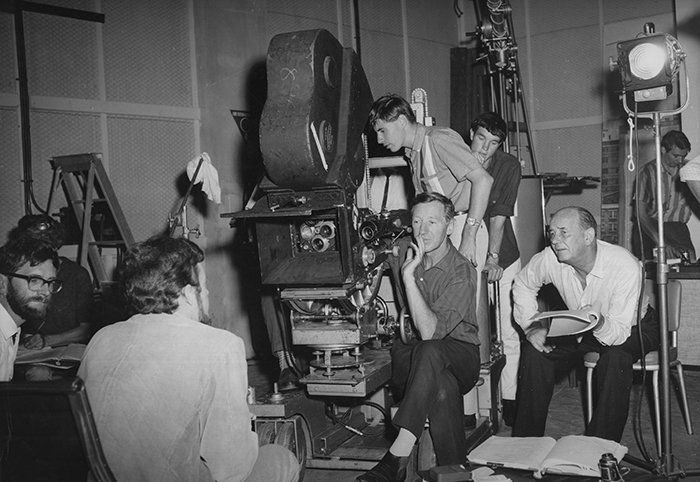
1956
The Film Division was re-named the Commonwealth Film Unit (CFU). During the 1950s the organisation made an increasing number of government departmental films, exploring new landscapes and cultures including Antarctica (Antarctic Pioneers, Frank Hurley, Phillip Law, 1963), New Guinea (New Guinea Patrol, Maslyn Williams, 1958), and a continued look at the Australian way of life (The Way We Live, John Gray, 1959).
1962
The CFU moved to new purpose-built premises at Lindfield, Sydney. CFU films of the 1960s gave visibility to Indigenous Australians (People of the Australian Western Desert, Ian Dunlop, 1965), migrants (The Helping Hand, Brett Porter, 1963) and women (Australia Now, Douglas White, 1965). Stylistically the CFU’s 1960s-era films became more adventurous, with From the Tropics to the Snow (Richard Mason, Jack Lee, 1964) providing the breakthrough. In focussing on ethnographic filmmaking, Ian Dunlop pioneered a distinctive cinematic as well as a personally engaged approach.

1973
The CFU was re-named Film Australia. Younger filmmakers working at Film Australia during the 1970s experimented with new styles and themes that reflected the era’s social change (Three to Go, Peter Weir, Brian Hannant, Oliver Howes, 1971; Why Can’t They Be Like We Were, Phillip Noyce and others, 1976). Film Australia increasingly produced films for domestic television audiences (Our Asian Neighbours, Brian Hannant, Keith Gow, 1971–1977; The Human Face of China, Bob Kingsbury, 1979).
1975
Film Australia became part of the newly formed Australian Film Commission.

1976
Bruce Petty’s animated Film Australia film Leisure (1976) won an Academy Award for Short Film (Animated).
1984
The Women’s Film Unit was formed at Film Australia, and its output included After Hours (Jane Campion, 1984). The 1980s were characterised by the federal government’s policy to contract freelance filmmakers, with output including feature-length telemovies and the highly successful Cane Toads — An Unnatural History (Mark Lewis, 1987).
1988
Film Australia became a government company and was one of the nation’s leading producers of television documentaries and educational programs.
1991
Film Australia’s monopoly on the output of government documentaries ended, after which it focused entirely on National Interest Program (NIP) films made for an Australian broadcast audience. Many key independent filmmakers produced for the NIP, including Bob Connolly and Robin Anderson (Rats in the Ranks, 1996), Trevor Graham (Mabo — Life of an Island Man, 1997) and Tom Zubrycki (The Diplomat, 2000).

2000s
Among the significant titles of this decade were the organisation’s feature-length documentaries (Unfolding Florence: The Many Lives of Florence Broadhurst, Gillian Armstrong, 2005) and a growing number of historical docudramas (Captain Cook – Obsession and Discovery series 2007, and Constructing Australia series 2006). The Film Australia collection could now be searched and viewed online.
1 July 2008
The federal government closed the film agencies Film Australia, the Australian Film Commission and the Film Finance Corporation, transferring their functions to the newly formed Screen Australia. The National Documentary Program replaced Film Australia’s NIP documentary strand, transferring all production to independent Australian documentary filmmakers.
1 July 2011
The Film Australia Collection and the Film Australia Library (formerly Screen Australia Library) as well as Sales and Distribution (formerly Screen Australia Sales) were transferred to the National Film and Sound Archive of Australia.
The National Film and Sound Archive of Australia acknowledges Australia’s Aboriginal and Torres Strait Islander peoples as the Traditional Custodians of the land on which we work and live and gives respect to their Elders both past and present.
